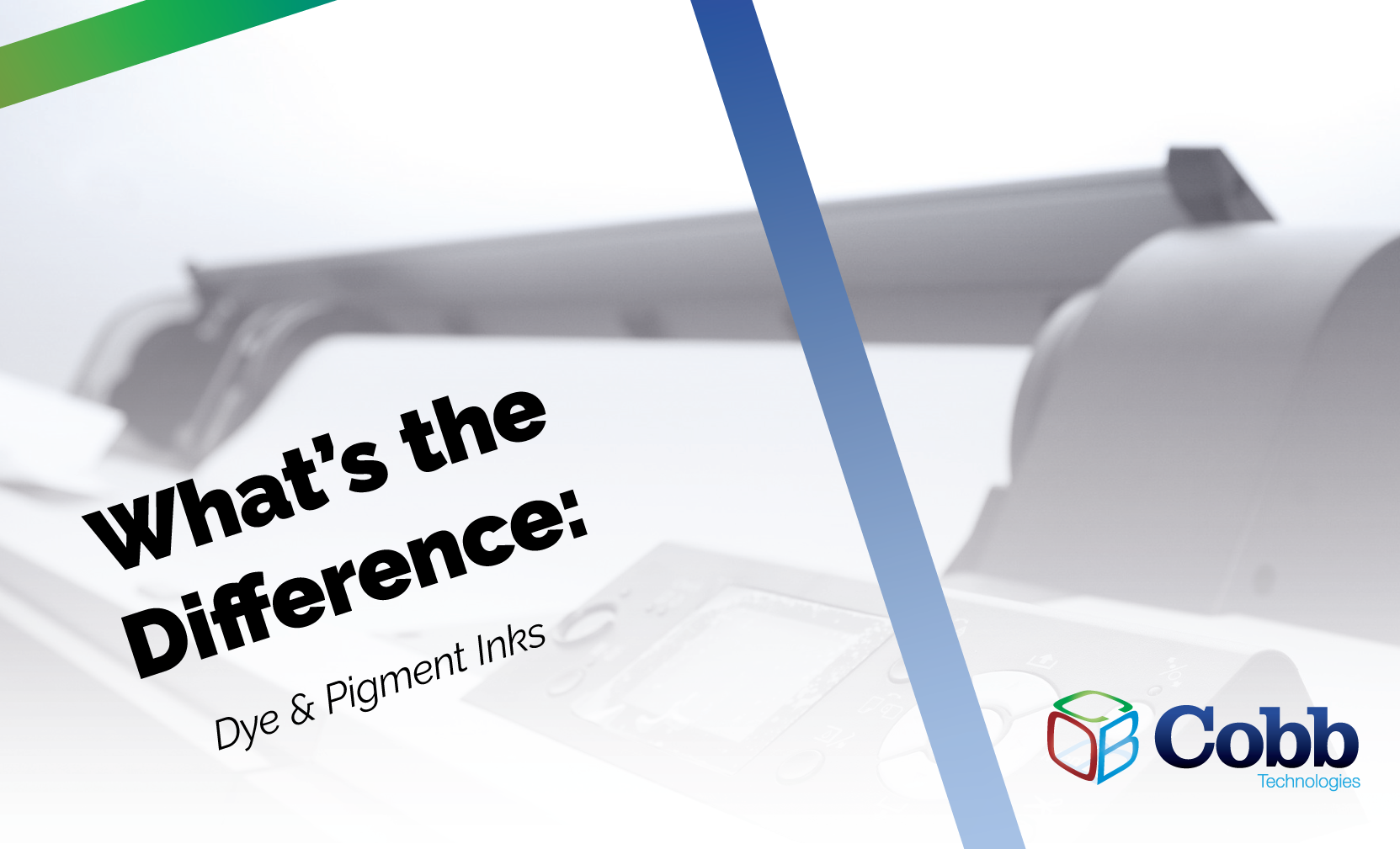2 min read
We “LOUVRE” Strong Passwords: How a Weak Password Can Lead to Big Losses
The Louvre’s password became the punchline of a global story after a heist revealed major security concerns for the museum. Reports say the password...

Laser printers. Toner-based printers. Ink-based printers. There are a lot of different ways to print words onto a page.
But did you know that there are actually different types of ink? And, depending on what type of ink your printer uses, it will change the final product?
Two of the most common types of inks are typically found in large format printers: dye inks and pigment inks.
If you had a thermal inkjet printer in your home in the early 00s, your printer used dye inks. Many printers still do, but they were especially common back then.
Dye-based ink was popular because it is cheaper to produce than pigment ink, and it provides more vibrant colors — making it the perfect choice for low-cost printers. There are a few problems with dye-based inks, however.
For one, dye inks are not very durable, and are susceptible to damage from exposure to water, and general fading. In addition to this, dye inks can tend to “soak” into plain, uncoated paper, which causes it to spread out slightly across the page. This can cause a slight degradation in the print quality of fine lines and small fonts but is largely unnoticeable when looking at big blocks of color.
Dye ink can also cause paper to “wrinkle” on the reverse side of the page when printing a document with heavy ink coverage. This is also caused by the ink being soaked up by plain paper.
Despite these detractors, dye ink is very useful and economical, and can create a good quality print when used and applied properly. Most HP DesignJet models use five dye inks, combined with one pigment ink — matte black — in order to provide a higher level of resiliency than simply all dye-based ink.
In recent years, pigment inks have become the preferred choice of most printers, due to several advantages over dye ink:
Due to pigment ink’s resiliency and archival qualities, pigment ink has been routinely used for graphics and photographic printers for years, even despite its higher costs than dye ink. With the improvements in making pigment ink more affordable, pigment inks have recently been instrumental in improving printing options for the technical market, such as architecture and engineering firms.
For example, both the Canon iPF series and the HP PageWide XL series both use pigment inks and provide the same durability as toner-based options.
There are many other types of printing methods used primarily for the outdoor market. Solvent inks (both mild and Eco-solvent) are used in many low-cost and even high-cost outdoor printers. These inks provide outdoor permanence of 2-4 years with no additional treatment. There are also latex and UV Gel printing processes for outdoor applications.
If you’d like to learn more about large format printing, view our blog, Canon Plotwave vs. HP Pagewide: What is the Better Printer?

2 min read
The Louvre’s password became the punchline of a global story after a heist revealed major security concerns for the museum. Reports say the password...

6 min read
Organizations of all sizes handle enormous volumes of data. Data is one of the most valuable assets of any organization.Unfortunately, it’s also a...

5 min read
In today’s digital-first workplace, your network is more than just a connection point; it’s the foundation of your operations. Whether your...